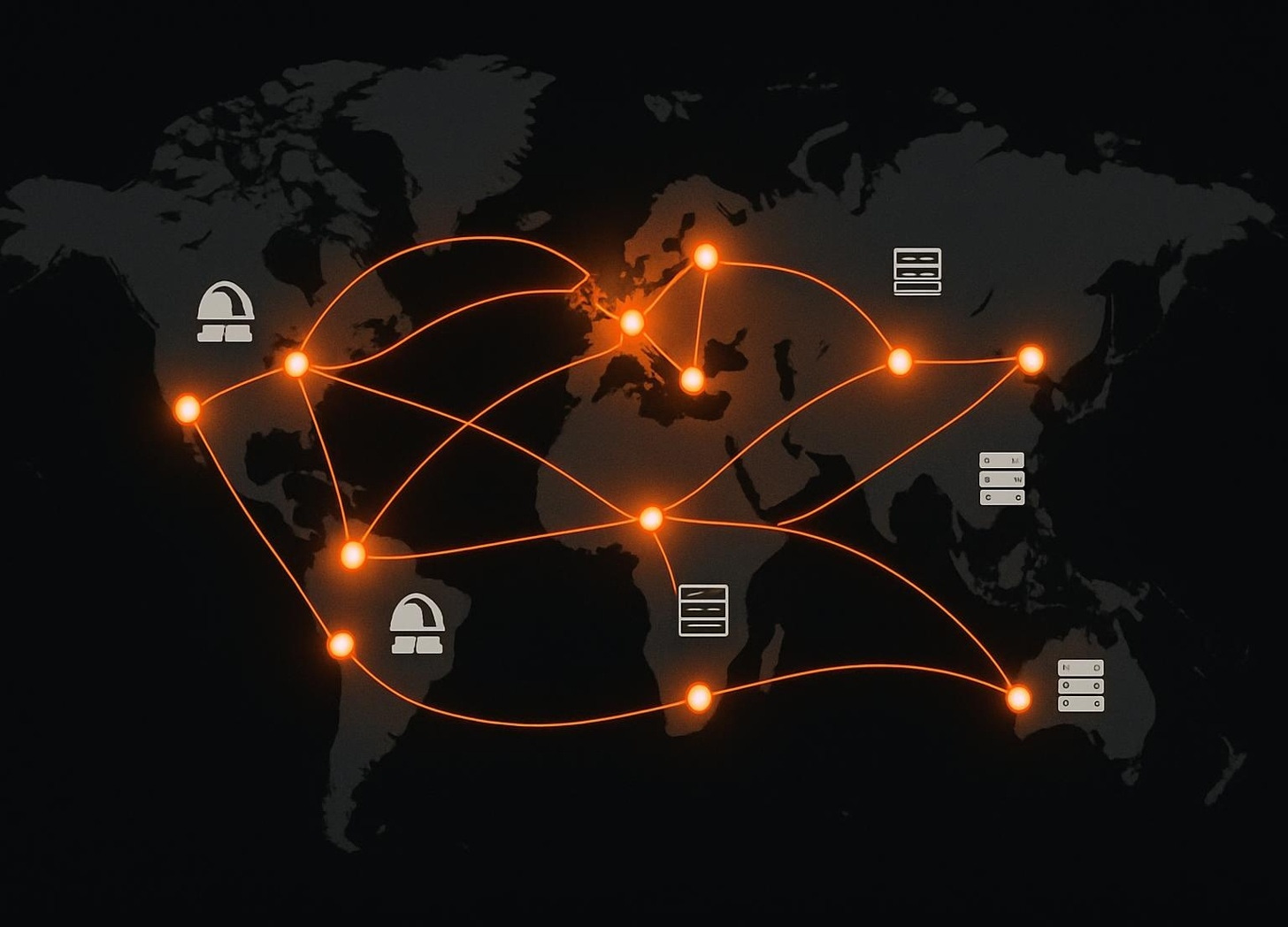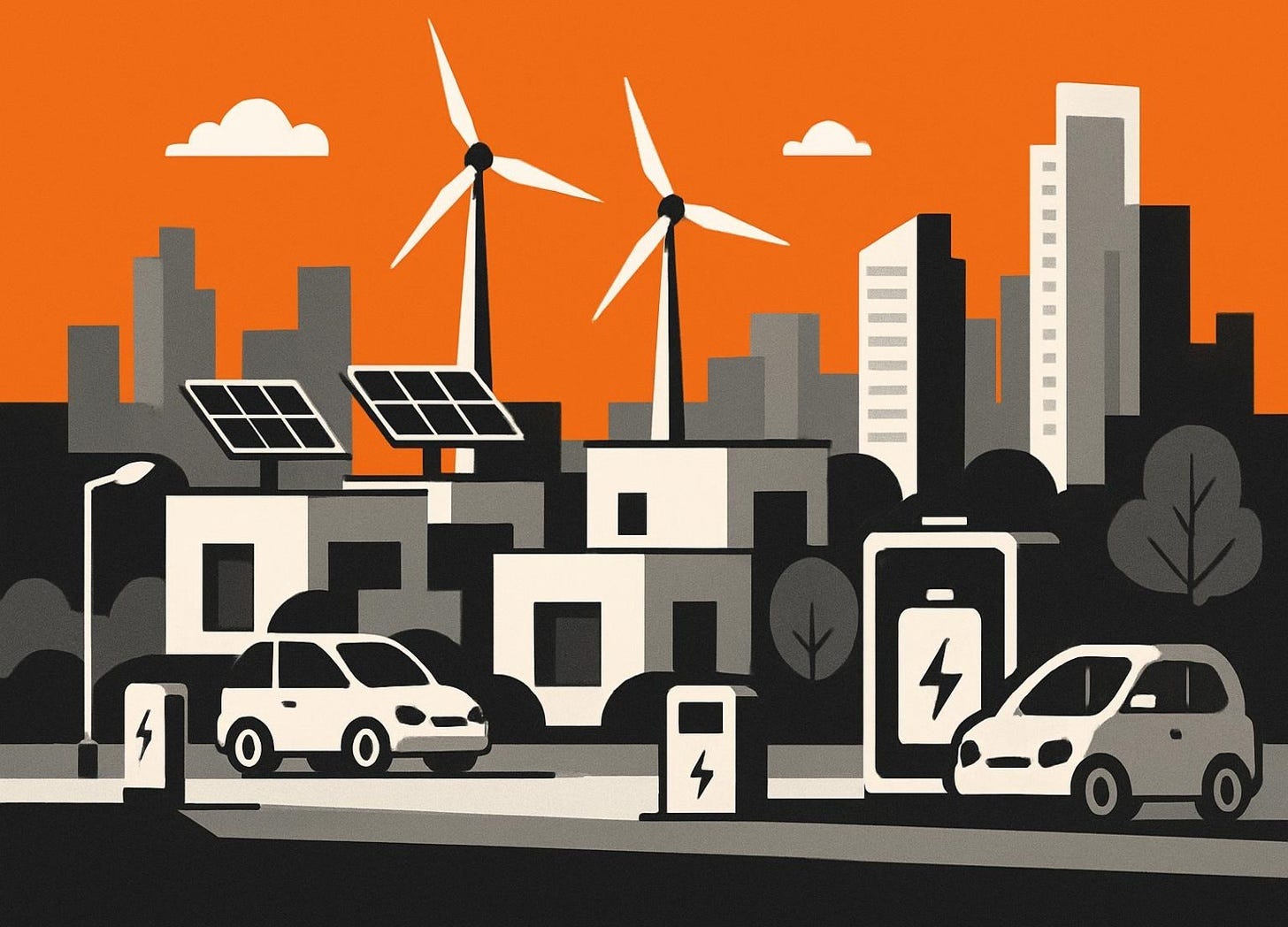Why We Chase Zero‑Point Energy
Human Values, Risks, and How We’d Prove It
🧠 Physicists keep designing new vacuum fluctuation experiments. What keeps us searching for the impossible?
The pursuit of zero-point energy isn’t just a technical quest. It’s a window into human nature, showing our hunger for truth, our urge to solve real-world problems, and the risks we’re willing to take for progress. Every experiment, debate, and breakthrough in this field highlights our values, our fears, and our hopes for the future.
This exploration connects science, ethics, and society. It raises questions about how we balance curiosity with responsibility, and whether we can build a future where abundant energy helps everyone without unleashing new dangers.
👉 Advanced Rediscovery brings you weekly briefings that cut through the noise with curated insights from my 10+ years of research in AI, extended electromagnetism, the quantum vacuum, and information theory.
In today’s briefing
🔍 Human curiosity and moral conviction drive the search for zero-point energy.
🌍 Global governance must balance openness and risk in advanced energy research.
⚡ Engineering milestones demand rigorous, reproducible evidence of energy extraction.
🧩 Post-scarcity energy could transform economies, society, and everyday life.
🤔 Responsible innovation means tackling ethical, technical, and social challenges head-on.
Human Motivation in the Pursuit of Zero-Point Energy
The quest for zero-point energy reveals more than technical ambition. It’s a story of human curiosity, ethical tension, and the search for meaning beyond material gain.
This motivation combines the drive for open knowledge, the hope of solving real problems, and the courage to challenge limits. Every breakthrough and controversy in this field puts our values to the test.
The pursuit of zero-point energy unites curiosity, ethics, and practical vision in the lab and beyond.
At the core, the pursuit of zero-point energy (ZPE) reflects a deep human need to understand and shape the universe. Curiosity drives individuals to ask questions that others avoid, while a sense of stewardship pushes them to seek solutions with real-world impact. The promise of abundant, clean energy is more than a technical fix. It’s a vision of healing the environment, transcending scarcity, and building a fairer society.
This journey isn’t just about physics. It’s about ethics, too. The debate over open disclosure versus secrecy shows a tension between transparency and risk. Some argue that radical openness accelerates progress, while others warn about the dangers of powerful technology in the wrong hands. Still, the preference for shared knowledge and practical engineering solutions often wins out over sensationalism or divisive narratives.
Courage and conviction matter. Many innovators face institutional resistance, risking careers and reputations to challenge the status quo. Their motivation isn’t just personal ambition. It’s a belief in the value of progress for everyone. The drive for conceptual elegance and unified explanations leads to frameworks that connect disparate phenomena, making the complex understandable and actionable.
“The pursuit of truth and the courage to challenge institutional resistance define the pioneers of advanced energy research.” “Imagination and practical problem-solving unite in the quest for a future beyond scarcity.”
The pursuit of zero-point energy is a microcosm of humanity’s biggest drives: curiosity, courage, and the hope for a better world. It’s as much about who we are as what we discover.
Why it matters
🧠 Curiosity and courage fuel the search for zero-point energy.
🌌 Ethics and stewardship shape debates on disclosure.
⚡ Practical solutions and open knowledge drive progress.
References [1–11]
Global Governance and Risk Management for Zero-Point Energy Technologies
The rise of zero-point energy research brings new risks alongside new hopes. Managing these dangers means building frameworks that balance openness with safeguards.
Global governance isn’t just about control. It’s about creating space for innovation while preventing catastrophic misuse, learning from past lessons in nuclear and artificial intelligence.
Global governance frameworks aim to keep advanced energy research open, safe, and ethical.
Governance of zero-point energy (ZPE) technologies requires more than technical rules. It demands a global moral consensus and practical systems to prevent the misuse of transformative physics. Outright bans on militarization, enforced by international agreements, set a clear red line. Ring-fenced disclosure allows public validation and innovation, but keeps the critical, lethal details classified.
Global monitoring, using networks of interferometric arrays, can detect and deter dangerous experiments in near-real time. Strict licensing and audit trails create controlled environments for peaceful research, escalating oversight as risk increases. Independent transparency programs, phased in over time, help build trust without exposing dangerous implementation details.
Dual-use assessment panels review research for both peaceful and harmful potential. Ethical training and certification become as crucial as technical skill, especially for those working near spacetime manipulation thresholds. Production limits and containment protocols, modeled after antimatter and nuclear safety, restrict experimental energy scales until safety is assured. Open-knowledge but closed-parameter publishing encourages progress while blocking catastrophic design leaks.
“A universal no-militarization compact is essential to prevent weaponization of advanced energy technologies.” “Ring-fenced disclosure and global monitoring can foster innovation while keeping civilization safe.”
Responsible global governance can make zero-point energy a force for good, not a new source of existential risk. The challenge is balancing rapid progress with real safety.
Why it matters
🌍 No-militarization pacts are vital for safety.
🔬 Ring-fenced disclosure balances openness and risk.
🧭 Ethical licensing and monitoring enable safe innovation.
References [5, 11–19]
Definitive Engineering Milestones and Verification Protocols for Zero-Point Energy Extraction
Proving zero-point energy extraction demands more than bold claims. It requires clear, reproducible experiments with rigorous controls and transparent measurement.
Engineering milestones must show real, irreversible energy shifts, not just theory or speculation. Verification is the gatekeeper for credibility in this field.
Reproducible, well-controlled experiments are essential for credible claims of zero-point energy extraction.
Convincing proof of zero-point energy (ZPE) extraction hinges on experiments that can be reproduced by independent teams. Cryogenic coil experiments target voltage fluctuations predicted by theory. These must show frequency, geometry, and temperature scaling, with null results in non-inductive controls. Microcavity and Casimir tunnel tests should reveal calorimetric or spectroscopic evidence of ground-state energy shifts, disappearing in matched non-Casimir setups.
Tunable Casimir devices, cycling between conductive and dielectric states, must demonstrate net mechanical work. Full accounting for switching energy and compliance with thermodynamic limits is essential. Broadband modulation of Casimir forces, using engineered optical property changes, is a key lever for future ZPE devices. All setups require review-grade controls: temperature sweeps, matched dummy geometries, and independent cross-lab replication to rule out artifacts.
Milestones should emphasize local, irreversible extraction events, such as measurable heat release or work output. Comparative baselines using known no-gain geometries are necessary to exclude hidden work pathways. Advances in microfabrication, enabling scalable Casimir tunnel arrays and on-chip calorimetry, are vital for optimizing devices and validating theoretical predictions.
“Milestones must focus on local, irreversible extraction events rather than unsupported claims of continuous vacuum energy conversion.” “Cross-lab replication and strict controls separate genuine breakthroughs from noise.”
Clear engineering milestones and tough verification protocols keep zero-point energy research honest. Only reproducible, well-controlled results will move the field forward.
Why it matters
⚡ Replicable experiments are the gold standard.
🔬 Rigorous controls and baselines prevent false positives.
📊 Local, irreversible effects prove real energy extraction.
References [20–21]
Societal and Economic Transformation in a Post-Scarcity Energy World
Abundant, low-cost energy could shake the foundations of society. The shift from scarcity to plenty means new opportunities, new risks, and new ways to organize life.
Transition policies matter. They can mean the difference between chaos and shared progress, especially as institutions and markets adapt to a world with fewer limits.
Abundant, decentralized energy could reshape economies, infrastructure, and daily life for everyone.
The end of energy scarcity would upend traditional economic models. Instead of competing for limited fuel, societies could focus on access, governance, and innovation. Decentralized, self-powering systems would reduce infrastructure costs and increase resilience, cutting reliance on centralized grids and fuel logistics. Environmental impacts would drop sharply as clean, fuel-free systems replace fossil and nuclear sources, helping public health and decarbonization.
Global development could accelerate, letting underserved regions leapfrog old infrastructure and build local industries and services. Transport and logistics would be revolutionized by self-powering vehicles and reduced dependence on refueling. Distributed architectures would make critical services like hospitals and data centers more resilient, able to operate off-grid during disruptions.
Markets would evolve, with early adopters and platform providers capturing value under new regulations. Institutional realignment, robust safety and health standards, and transparent public communication would be essential to minimize disruption. Social welfare could improve as essential services become more affordable and accessible, supporting efforts to address homelessness and inequality.
“Eliminating energy scarcity would shift economies from competition over resources to models focused on access, governance, and innovation.” “Distributed architectures would enhance resilience and make essential services more accessible to all.”
A post-scarcity energy world could mean more than cheap power. It could open doors to equity, resilience, and new forms of progress, if society manages the transition wisely.
Why it matters
🧩 Abundant energy shifts focus from scarcity to access.
🌍 Decentralized systems boost resilience and equity.
📊 Transition policies shape who benefits from new energy.
References [1–2, 6, 22–30]
Final Thoughts
I see the pursuit of zero-point energy as more than a technical challenge. It’s a mirror for our values, ambitions, and fears. The assumption is that knowledge and abundance can solve deep problems, but this brings its own risks. Hypotheses about global cooperation, open science, and ethical safeguards shape the debate.
Questions remain. Can humanity handle the power it seeks? Will radical transparency or tight control win out? What new dilemmas will emerge if abundance becomes reality? Our drive to understand and harness the universe’s mysteries exposes both our potential and our limits. This invites us to reflect on what kind of future we’re building.
Quick Recap
🧠 Human curiosity and ethics shape our energy quests.
🌍 Global rules must manage both risks and benefits.
⚡ Proving zero-point energy needs clear, shared tests.
🧩 Abundant energy could reshape society and economy.
👉 Each week you’ll receive one email with ideas, digital material, and tips from my lab. As a PhD engineer, I’ve built the mindset to decode and build upon intricate systems and theories — and I’ll help you do the same.
💡 What would you prioritize: open science or strict safeguards? Share your view and challenge the consensus!
🧑🏼 Follow @drxwilhelm on X Twitter, Substack, Medium, TikTok, YouTube
Glossary
Zero-Point Energy (ZPE): The lowest possible energy state of a quantum system, where fluctuations persist even at absolute zero temperature.
Vacuum Fluctuation: Temporary changes in energy in empty space, as predicted by quantum theory.
Casimir Effect: A quantum phenomenon where two uncharged, parallel plates in a vacuum experience an attractive force due to restricted vacuum fluctuations.
Calorimetry: A technique for measuring the amount of heat released or absorbed during a physical or chemical process.
Ring-Fenced Disclosure: The practice of sharing general scientific results while keeping critical, potentially dangerous details secret.
Dual-Use: Technologies or research that can be used for both peaceful and harmful purposes.
Cryogenic Coil Experiment: An experiment that uses superconducting coils at very low temperatures to detect subtle electromagnetic effects.
Decentralized Architecture: A system design that distributes control and resources across many independent units, increasing resilience and flexibility.
Post-Scarcity: An economic condition where most goods and services are easily available due to technological advances, reducing competition over resources.
Ethical Licensing: A process where researchers or institutions must demonstrate ethical awareness and responsibility before accessing sensitive technologies.
Sources & References
Forbes A. Malaysian Airlines Monday: Lue Elizondo Comments on the Vid [video]. YouTube.
Forbes A. The Candace Owens Interview Reactions – Malaysian Airlines M [video]. YouTube.
Forbes A. Zero Point Energy Explained [video]. YouTube.
Forbes A. Magvid – Best Free Energy Devices – Free Energy Friday [video]. YouTube.
Forbes A. Secret Science Wednesday – Manipulating Reality With Negativ [video]. YouTube.
Forbes A. Malaysian Airlines Monday – Diego Garcia Fake Satellite Pi [video]. YouTube.
Forbes A. Zero-Point Energy Unification – Secret Science Wednesday [video]. YouTube.
Forbes A. Free Energy Friday – Magnetic Motors [video]. YouTube.
Murakami A. The Quantum Key. 2009.
Forbes A. Secret Science Wednesday – Gem Unification Theory [video]. YouTube.
Forbes A. Free Energy Friday: Parametric Resonance of Electric Oscill [video]. YouTube.
Forbes A. Hard Truths 5 – Roy D. Herbert’s Unification Dilation Theory [video]. YouTube.
Forbes A. Avi Loeb – The Science of UFO Technology: Hard Truths [video]. YouTube.
Forbes A. MH370X – All Evidence Review Space [video]. YouTube.
Forbes A. UK Govt UFO Investigator Exposes the Dark Side of Disclosure [video]. YouTube.
Forbes A. Hard Truths Podcast 1 – Salvatore Pais [video]. YouTube.
Forbes A. Jason Jorjani – Slow Drip Disclosure, Zero Point Energy [video]. YouTube.
Forbes A. Hard Truths 3 – Dave Rossi and Ashton Forbes [video]. YouTube.
Forbes A. Tom Montalk – Hard Truths: The Physics of UFOs [video]. YouTube.
Davis EW; Puthoff HE. On Extracting Energy from the Quantum Vacuum.
Forbes A. Secret Science Wednesday – Conscious Plasma [video]. YouTube.
Forbes A. Randall Carlson – Plasma Events, Sacred Geometry, Ancient [video]. YouTube.
Forbes A. Secret Science Wednesday – Evo’s Whistleblower [video]. YouTube.
Bearden TE. Oblivion – America on the Brink. 2005.
Bearden TE. The Motionless Electromagnetic Generator – Extracting Energy from a Permanent Magnet with Energy-Replenishing from the Active Vacuum. 2018.
Bearden TE. Situation and Decision Briefing – A Manhattan Project Is Required to Rapidly Develop and Implement World-Wide Free EM Energy from the Active Vacuum. 2008.
Bearden TE. The Final Secret of Free Energy. 1993.
Bearden TE. EM Energy from the Vacuum – Ten Questions with Extended Answers. 2000.
Bearden TE. Phases of Research and Development and Some Problems. 2007.
Forbes A. Hard Truths 4 – Salvatore Pais, Dave Rossi, Anti-Gravity [video]. YouTube.







